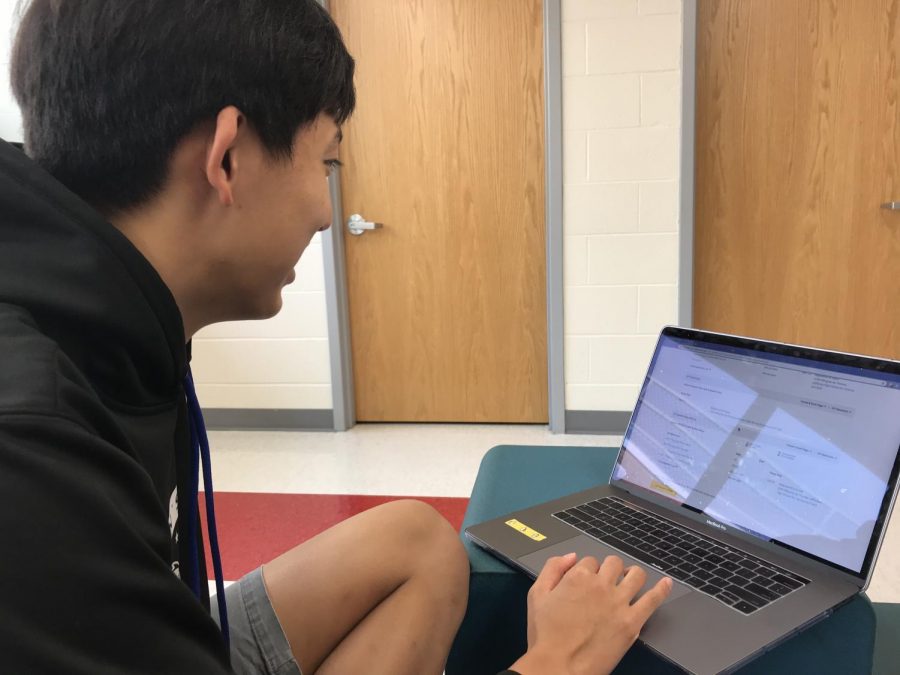AP Classroom: A New Resource for AP Classes
The AP Classroom tool released by College Board for all AP classes is a new way for students and teachers to prepare for AP exams
Junior Anthony Wong looks at his AP Classroom assignments in AP Classroom’s new section of the AP website.
October 1, 2019
At the start of the school year, there are lots of new things to get used to: classes, teachers, and homework. This year, however, a new teaching material was introduced to students in every grade: AP Classroom. AP Classroom is a digital resource provided by College Board to schools that teach AP classes. It mainly includes ways for teachers to administer assessments online, such as progress checks, quizzes, and tests, and automatic student registration for AP tests.
“College Board announced that they would be introducing the AP Classroom in 2017, and they had a beta group of schools testing the system to see how it would work first. Coming from an IB background, I was glad that AP was finally getting caught up to the online world,” Jefferson testing coordinator Leslie Barnhart said. “[Our teachers have had] the summer to see the resources, explore the new website, and get used to the idea. Teachers who went to the AP Summer institute were our real ground breakers, networking with other schools to see how everyone was using the programs.”
Barnhart did not find AP Classroom difficult to implement at Jefferson. She created the AP Classroom sections for each period of each class, once she had a list of all the AP classes for the 2019-2020 school year. She also gave teachers training during the summer on the basics of AP Classroom.
“I hosted a session for teachers who wanted to walk through the process together, and get a tutorial on how to get the students into their sections. The hardest part has been getting all the students to register for their classes so I can order a test for them,” Barnhart said.
Mathematics teacher Dr. Catherine Scott uses AP Classroom mainly for AP test preparation. In the past, Scott had to find and print out test questions from previous years that had been released by College Board. However, AP Classroom enables an easier online process.
“It’s a searchable test generator. So I can search by objective, and then put those into a test automatically, then I can deliver it to my students online, so they can use laptops instead of printing out pages,” Scott said.
Thus, AP Classroom’s test material resources work to reduce the use of paper, and also increase the amount of practice questions teachers can give students.
“The big change comes with accessibility. So now the students will have access to more questions than just the sample tests that [College Board] would release. So I have more resources to share when it comes to volume,” Scott said.
Students have differing opinions on AP Classroom. Some students have not used AP Classroom aside from enrolling in their class sections, so that they can be automatically registered for their AP tests.
“AP Classroom seems to be just a medium to give more work. Only good thing is that it replaces the disgusting Mathspace,” senior Jay Misener said.
As it’s only the beginning of the school year, the overall effect of AP Classroom is still undetermined.
“I’m hopeful that with the online element, it gives teachers another avenue for students to explore concepts themselves and work in groups, base some homework on thoughtful completion rather than perfection, and begin the concept of non-graded assessments,” Barnhart said. “These concepts very much align with the Challenge Success initiative, so even though this year might not have a lot of changes, over time, we hope the changes will become part of who we are.”






